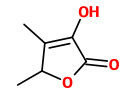Trigonella foenum-graecum L. - Fabaceae - fenugreek, greek clover, greek hay, (Griechischer) Bockshornklee, Griechisches Heu
Taprooted annual herb, 30-60cm high, native to Asia and the Mediterranean region; axillary flowers solitary or in pairs, cream to pale yellow; pods linear, up to 10cm long, with up to 20 seeds; seeds rhomboid;
„The specific epithet foenum graecum means Greek hay.“ http://de.wikipedia.org/wiki/Trigonella_foenum-graecum
„It is cultivated worldwide as a semi-arid crop, and its seeds are a common ingredient in dishes from the Indian Subcontinent…. charred fenugreek seeds have been recovered from Tell Halal, Iraq, (carbon dated to 4000 BC) and Bronze Age levels of Lachish and desiccated seeds from the tomb of Tutankhamen.“ http://en.wikipedia.org/wiki/Fenugreek
Traditionally used as digestive tonic, demulcent, expectorant. „The characteristic foenugreek smell is ascribed to 3-hydroxy-4,5-dimethyl-2[5H]-furanone (sotolon); the bitter taste to the furostanol glycosides.“
[Medicinal Plants of the World. Ben-Erik Van Wyk and Michael Wink, Pretoria 2004, 325]
 3-hydroxy-4,5-dimethyl-2[5H]-furanone (sotolon)
3-hydroxy-4,5-dimethyl-2[5H]-furanone (sotolon)
Fenugreek is the source of the sotolone present in curry powder. „Furthermore, it is interesting to note
that sotolone seems to be relatively stable in the seed, since the sample from Egypt (25mg/kg) was already seven years old.“
[Blank, I.; Schieberle, P.; Grosch, W. Quantification of the flavour compounds 3-hydroxy-4,5-dimethyl-2(5H)-furanone and 5-ethyl-3-hydroxy-4-methyl-2(5H)-furanone by a stable isotope dilution assay. In Progress in Flavour and Precursor Studies; Schreier, P.; Winterhalter, P., Eds.; Allur. Publ.: Wheaton, USA, 1993, pp. 103-109] http://www.imreblank.ch/Bioflavour_1993_103.pdf
„3-Hydroxy-4,5-dimethyl-2(5H)-furanone (sotolone) was established as the character impact flavor compound of fenugreek on the basis of gas chromatography-olfactometry. Sotolone was found to occur predominantly in the
(5S) enantiomeric form (95%)… About 2-25ppm sotolone were determined in fenugreek of different origins using
the isotope dilution assay technique.“
An aroma extract dilution analysis (AEDA) was applied to classify the aroma composition of T.foenum-graecum extract into three groups having different sensory relevance:
“high” - sotolon (seasoning-like)
“medium” - (Z)-1,5-octadiene-3-on (metallic), acetic acid (acid), and 3-amino-4,5-dimethyl-3,4-dihydro-2(5H)-furanone (seasoning-like)
“background” - diacetyl (buttery), 1-octene-3-one (mushroom), 3-isopropyl-2-methoxypyrazine (roasty-earthy), 3-isobutyl-2-methoxypyrazine (roasty-paprikalike), linalool (flowery), butenoic acid (sweaty-rancid), isovaleric acid (sweaty-rancid), caproic acid (musty) and eugenol (spicy)
(together with some unidentified substances).
[The principal flavor components of fenugreek (Trigonella foenum-graecum L.)., Blank, I., Lin, J., Devaud, S., Fumeaux, R., Fay, L.B., In ACS Symposium Series (Vol. 660, No. 3, 1997, 12-28). Washington, DC: American Chemical Society] http://www.imreblank.ch/ACS_1997_660_12.pdf
„The seeds are bitter in taste due to presence of bitter saponins, which limit their acceptability in foods (Sharma 1986; Udayasekhera and Sharma 1987). It has been possible to debitter fenugreek seeds by employing various processing methods such as soaking, germination, roasting, etc… nutritional quality of fenugreek seeds can be improved through processing methods and bitterness can also be reduced to some extent.“
[Effect of soaking and germination on nutrient and antinutrient contents of fenugreek (Trigonella foenum graecum L.)., Hooda, S., Jood, S., Journal of food biochemistry, 27(2), 2003, 165-176] http://www.pfigueiredo.org/Bro37.pdf
„The average yield in essential oil was 1.24% (w/w). GC-MS analysis resulted in the identification of 13 compounds representing 97.2% of the total essential oil. The most abundant components (> 4%) of the fenugreek essential oil were β-pinene (15.05%), 2,5-dimethylpyrazine (6.14%), 6-methyl-5-hepten-2-one (4.48%), camphor (16.32%), 3-octen-2-one (4.32%), β-caryophyllene (14.63%), neryl acetate (17.32%), α-selinene (4.04%) and geranial (4.81%).“
[Inhibitory potential of omega-3 fatty and fenugreek essential oil on key enzymes of carbohydrate-digestion and hypertension in diabetes rats. Hamden, K., Keskes, H., Belhaj, S., Mnafgui, K., Allouche, N., Lipids in health and disease, Vol.10(1), 2011, 226] http://www.lipidworld.com/content/10/1/226/
Fenugreek with reduced bitterness (FRB) may be prepared by treating fenugreek with beta-glucosidase.
„… diosgenin is considered to be an active ingredient. However, a major part of protodioscin was converted by the enzyme into dioscin in the FRB. Therefore, in our study, dioscin as well as diosgenin may have contributed to the improvement of glucose and lipid metabolism… 1.2% or more of FRB prevents diet-induced metabolic disorders including insulin resistance, dyslipidemia and fatty liver [in rat]. The effective and safe dose of FRB is around 1.2% (w/w) contained in the diet (~ 0.25 g/kg BW/day).“
[Fenugreek with reduced bitterness prevents diet-induced metabolic disorders in rats., Muraki, E., Chiba, H., Taketani, K., Hoshino, S., Tsuge, N., Tsunoda, N., Kasono, K., Lipids in health and disease, 11(1), 2012, 1] https://lipidworld.biomedcentral.com/articles/10.1186/1476-511X-11-58

Kohl, F.G., Die officinellen Pflanzen der Pharmacopoea Germanica, t.102 (1891-1895) [F.G. Kohl]
http://plantgenera.org/species.php?id_species=1032679

Trigonella foenum-graecum, Zohor, Slovensko (2023)
© Ivan Jarolímek CC BY-SA 4.0 inaturalist.org